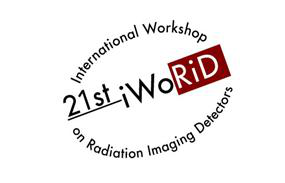Speaker
Description
In this work, we report on the quantitative analysis on the effect of electric field on SiPM characteristics in scintillator detection applications. In particular, we demonstrate the SiPM performance with respect to the electric field distribution in terms of the number of incident photons (Nph) and wavelengths (λ) to highlight the importance of well structure in SiPMs. SiPMs investigated in this work were based on an n-on-p structure and all samples were fabricated on a 200 mm n-type epitaxial-layer wafer with a pixel size of 2.95×2.95 mm2 and a microcell size of 65 μm. Maintaining the wafer, fabrication conditions, and device layout identical, we produced SiPMs with three different electric field distributions across the depletion region by applying three boron implantation doses (Φp-well) in descending order during the p-well formation: 5.0×1012 (Device #1), 4.0×1012 (Device #2), and 3.0×1012 (Device #3) atoms/cm2. Measurements on the dark count rate (DCR) and photon detection efficiency (PDE) were obtained as a function of excess voltage (Vex) for three samples. Based on the measured device parameters, the photon number resolution [1] of each sample was calculated as a function of Nph ranging from 5.0×102 to 10.0×104 and λ 375 to 700 nm to account for as many scintillators as possible. The results show that SiPMs with reduced electric field could be a reasonable approach for scintillator detection applications with a very high photon flux (e.g., CsI(Tl) and LaBr3), whereas SiPMs with enhanced electric field could be a better choice for moderate or low photon flux (e.g., LYSO and plastic).
